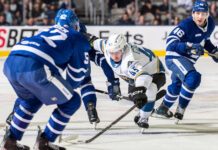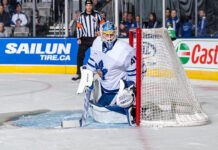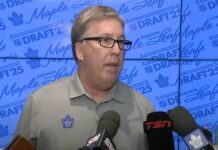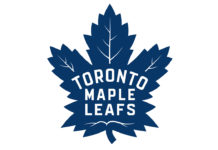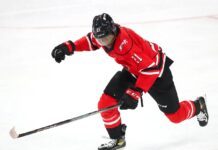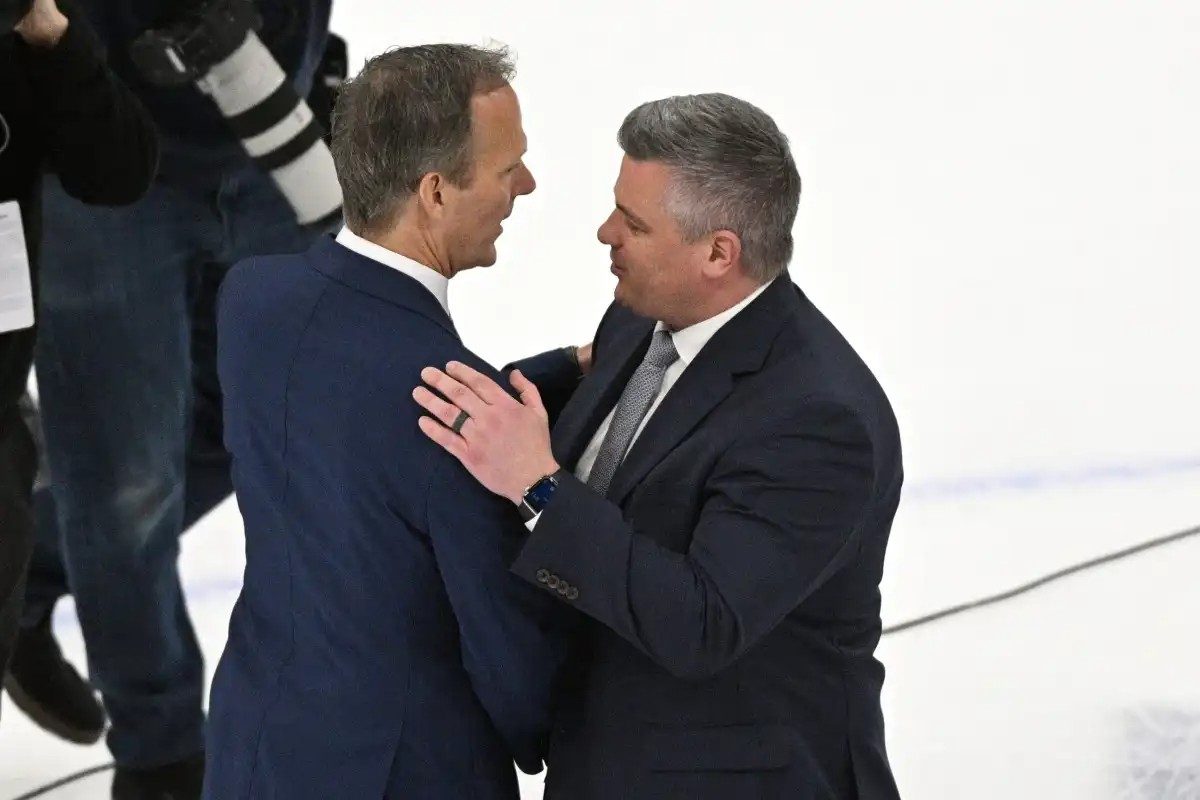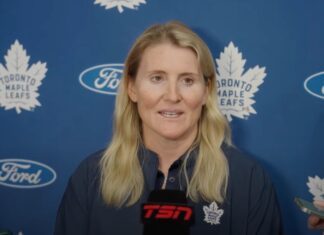The dust has settled since the Maple Leafs were eliminated from the 2024 playoffs and Sheldon Keefe was subsequently dismissed as head coach. Now, the real work starts.
Before we get to what’s next, I wanted to share a few thoughts on Keefe and his tenure.
The firing itself was not surprising at this point. Keefe was the fifth longest-tenured coach in the league at the time. The list of the four coaches ahead of him featured three Cup winners – Jon Cooper, Mike Sullivan, and Jared Bednar – and Rod Brind’Amour, who has won at least one playoff series in five of six seasons in Carolina and has been to two Eastern Conference Finals.
By comparison, Keefe is 1-6 in playoff series. To receive so much rope in a league where Martin St. Louis, hired by Montreal in 2022, is now the sixth longest-tenured coach is essentially unprecedented.
Keefe is not solely to blame, and he is probably taking more heat than he deserves relative to the highly paid, underachieving core group of players who actually play the games. However, at some point, the Leafs needed to try a different voice with new ideas and find out if someone else could break through with better results.
Truthfully, the time should have come in the summer of 2022 when all of Barry Trotz, Bruce Cassidy, and Peter DeBoer were available. Trotz is one of the winningest coaches of all time, and each of Cassidy and DeBoer had already been to the Stanley Cup Finals. They all represented tangible, experienced upgrades at the time.
When Brad Treliving took over the next offseason, the coaching pool was far less experienced. The only coach with a notable pedigree was Peter Laviolette. Based on the Rangers’ success this season, you could argue that Laviolette would have been a good hire, but he was always the favourite to go to New York. I’d argue he would’ve been more “change for the sake of change” in Toronto rather than a strategic hire to improve the team.
To Keefe’s credit, he responded with arguably his best season coaching the team in 2023-24, even if some of it happened accidentally due to injuries – namely, finally splitting up Matthews and Marner and experimenting with different line combinations. The team had a mediocre defense group on paper and produced lottery-level defensive results early in the season, but they were able to iron out under Keefe.
The first half of the season was largely the same old, same old as the Leafs loaded up their top line and lollygagged through the schedule, dropping games to bottomfeeders as Florida and Boston distanced themselves in the standings by the end of November. But they cleaned up their game as the season went along, tightening up defensively, navigating instability in net, and integrating a collection of inexperienced players into the lineup.
Keefe was more vocal in calling out his players—specifically, his stars—and sometimes even benched them. Those were welcome changes and a breath of fresh air. If the team had stayed healthy, this would’ve been the first playoff in which he split up stars across three lines (and, again, I do think the Leafs would have won the Boston series before losing to Florida if they were at full strength).
Ultimately, it was too little, too late. Old habits die hard.
Every regular season under Sheldon Keefe, the Leafs’ power play has been excellent before more or less falling off a cliff every single playoff save for the spring when they beat Tampa Bay (no coincidence). They went 1/21 against the Bruins, and the top unit stepped on the ice to start every single power play, come hell or high water. They ran the same breakout all series that the Bruins clearly had the book on. The same culprits were repeatedly careless with the puck, killing possessions.
It would’ve been unfathomable to cue up a sixth straight season of watching the Leafs’ power play rip it up from October to January, only to wonder if and when it would fall off a cliff (and whether we were all stuck in a time loop). Keefe put too much faith in his top players who never got it done, and the power play was a microcosm of it.
Over the five years of Keefe’s tenure, Mitch Marner is second among all forwards in the NHL in time on ice per game in the playoffs. Auston Matthews is fourth. Marner recorded 33 points in 37 games over that time, while Matthews produced 35 points in 35 games. Those aren’t terrible numbers, but they are lower than what’s expected despite superstar-level minutes.
In the same time period, McDavid is first in average time on ice per game but has 83 points in 44 games, while Draisaitl is fourth in time on ice per game and has 79 points in 44 games. One can argue it’s unfair to compare Matthews and Marner to the two Oilers stars, but Keefe deployed them as if they’re that good, and it wasn’t even remotely close. There is blame to go around here – to the players for not performing at a higher level and to the coach for trotting them out so much regardless of their play/production.
When Brendan Shanahan, Brad Treliving, and Keith Pelley took the podium after Keefe was dismissed and talked about the time for patience being over, one of the first things I thought of was the patience they have shown with their top players waiting for them to break through. This was clearly their plan – the young stars would learn, grow, and eventually emerge in the playoffs. It never happened. We can wonder if Matthews might have this spring if he had stayed healthy following his excellent Game 2, but nowhere was this more evident than with Marner and his play. Their patience was never rewarded.
The new coach will have to find a way to better prepare the Leafs’ stars to produce in the playoffs and build contingency plans rather than simply handing them huge minutes and hoping it works out.
Keefe ultimately finished with the sixth-most coached games in Leafs history (ironically enough, he was two behind Mike Babcock for fifth), and his .665 points percentage is first all-time among Leafs coaches, well ahead of Pat Quinn’s .591 mark. Unlike Quinn, though, Keefe walked into a team that was primed and ready to go with top talent. Of course, he did not come close to Quinn’s playoff success with his multiple Eastern Conference Finals appearances. That’s a big reason why Keefe’s .432 winning percentage in the playoffs will be what’s remembered the most. The Leafs never took the next step as an organization during his reign.
Notes on Keefe’s tenure, the Leafs’ next head coach, and Brad Treliving’s upcoming offseason
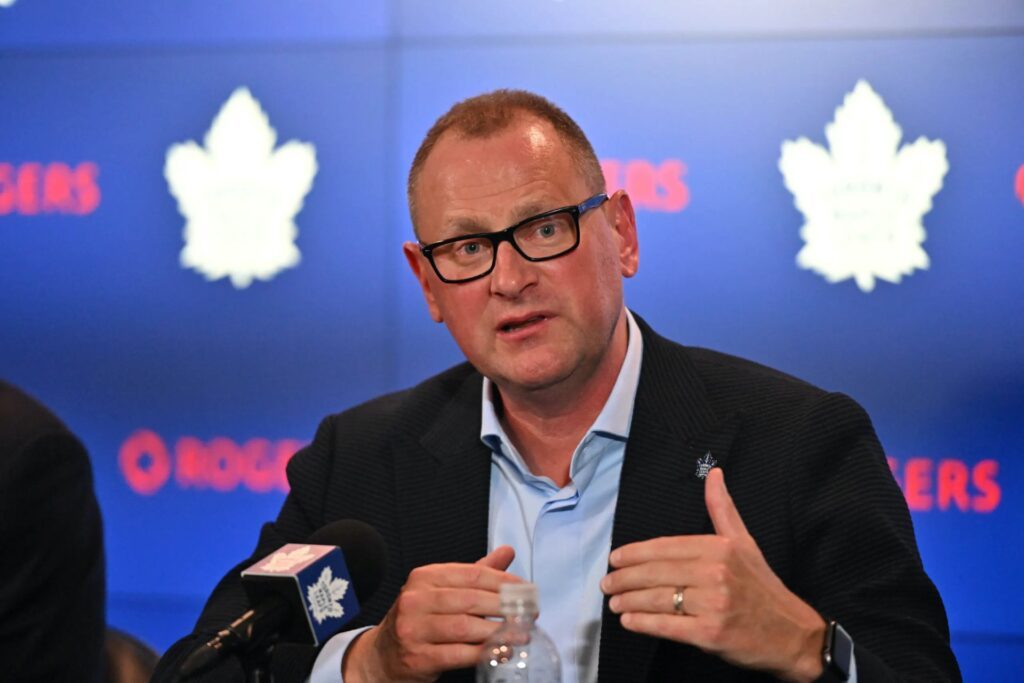
– There were some positives from Keefe’s tenure that the new coach would be wise to learn from. Again, Keefe has the best regular season winning percentage in Leafs history; it would be silly to think nothing can be gleaned from him in a positive light.
Keefe was good with the media, which is a requirement in this role. That’s the reality of coaching the Toronto Maple Leafs. There is a lot of attention and publicity, and if the coach can’t handle it, he will flame out quickly. Keefe was almost boring and robotic in most of his interviews. He stuck to facts and very rarely used the microphone in front of him to call out players.
I do think there’s a time and place on occasion, but the coach can’t be doing it in Toronto with any level of regularity. Roughly a decade ago, it became a story in Toronto for at least a month when Randy Carlyle said James Reimer played “just okay.” Generally speaking, the coach is better off saying nothing. It sucks for us from a content perspective, but from a coaching longevity perspective, it really is the way to go.
– The other thing Keefe did well was cut through the noise of the market and focus on the areas that really needed improvement. This season, goaltending was a hot topic—and it was bad at points, to be clear—but there’s nothing the coach can do about it. Their defensive numbers were objectively awful in December and needed to be addressed, and Keefe kept his focus there.
When players ran cold during the season, Keefe would ride out the percentages and wait for them to bounce back as long as they were generating scoring chances rather than demoting them and compounding the issue.
Conversely, in the playoffs, he was too slow to adjust to struggles, especially in a short window where he couldn’t bank on the percentages rebounding fast enough. In the regular season, though, it has its place.
– In the new coach, I think experience is a requirement at this point. Keefe’s lack of NHL experience really showed through in the playoffs, especially the first few seasons – from dressing young players who weren’t ready (Nick Robertson) to unnecessarily messing with winning lineups (taking out Travis Dermott after he played well to dress Rasmus Sandin, who promptly cost them multiple goals) to handling the officiating and the mind games of the playoffs.
The Leafs’ home record was inexcusable in the postseason under Keefe, and it was largely due to his overthinking tendency. When they finally won a series, the celebration was over the top, and they promptly lost three straight in the next round, digging a hole they couldn’t climb out of. The talk after that Game 6 was about finally getting over the hump, with Keefe noting it was a long-time coming for him and the team. It was one round.
Ultimately, at this point, the Leafs need someone who has been through the meat grinder and has a broader perspective in mind to level-set the team and keep their eyes on the prize. Every series under Keefe was an absolute slog. Nothing came easy. There was always drama, and it was exhausting. A team can’t keep that up for two months straight.
In a perfect world, a more experienced coach who has been there and done that can manage all of this better. It doesn’t mean a candidate needs a Cup ring to qualify, but there should be at least some level of playoff success and experience to fall back on.
– Special teams will also be a huge story. The power play has been a clear detriment to the team’s playoff success in four of the last five years. We are not even setting the bar at “good” at this point; simply average would suffice, which is insane considering the talent and regular season success. The penalty kill was under 80% in each playoff in the last three years. The head coach doesn’t necessarily need to be the one to sort this out specifically, but he will have to oversee the assistants who do.
– I also think cohesion with Brad Treliving will be imperative. Treliving clearly built the team in the offseason to feature a three-line attack with an energy line, but Keefe did not run it in that manner for the first half of the regular season. It was again centered around the top four logging heavy minutes, and everything ran through them in terms of deployment and style of play.
Max Domi looked like a fish out of water to start the season, playing left wing with David Kampf as his center while Keefe repeatedly admonished Bertuzzi on the bench as he struggled to adjust early. When they both moved up the lineup as the season went along and the team started to play more of a forechecking style, both players were suddenly useful.
It felt a little disjointed early in the season, and it took a while to click. That can happen in an arranged coach-GM marriage, but Treliving is hiring his own man now.
– Similarly, at the start of training camp, the Leafs experimented briefly with William Nylander at center, something Keefe admitted was Treliving’s idea. Nylander is coming off a great season and has played wing pretty well his entire NHL career, but center is a real position of need/concern for the first time since the Leafs signed John Tavares. The UFA market is thin, with only Elias Lindholm and Chandler Stephenson among the legitimate top-six options.
Short of a trade, the Leafs’ best option to address their center position for next season is reigniting the Nylander-to-C idea and actually giving it some run, which Keefe never did. It would really solve a lot of problems for the team. Nylander likely wouldn’t be as productive – he can’t blow the zone for offense at center (something Nylander himself noted in the fall) – but he’s fast, strong, and easily their best player at slicing through the neutral zone. In terms of controlling play and the game’s tempo, it could go a long way toward tilting the ice more for a Leafs team that was 15th in 5v5 shot attempt share last season.
– One need we have not discussed yet is replenishing the team’s draft stock. Brad Treliving hung onto the Leafs’ 2024 first-round pick, and they also have a fourth, three fifths, and two sevenths. They’re not flush with picks, but it’s certainly enough to manufacture a draft class of quality.
In 2025, though, the Leafs own zero draft picks in the first four rounds. In 2026, they already don’t have a second or a fourth. If they shed salary in any capacity, replenishing the 2025 draft, in particular, is critical. If we look at this past trade deadline, they didn’t have enough ammo to make a real offer for a player like Alex Wennberg (he went for a second and a fourth). As it stands today, the Leafs wouldn’t be able to replicate even this past deadline, where they added Ilya Lyubushkin and Joel Edmundson. They need to give themselves the opportunity to buy next spring, and they have to set the table this summer.
– I thought it was noteworthy that no injuries were announced for Mitch Marner or Morgan Rielly, while John Tavares was healthy enough to head to the World Championships right after the Leafs were eliminated. All three struggled in the playoffs and were apparently in reasonably good health.
– For the second straight year, the Leafs were once again in the top seven in man games lost. In 2023, they were fourth. Part of it is simply employing Matt Murray followed by John Klingberg, but it’s fair to start asking questions.
The Leafs have a sports science department, as most teams do, and it is an overly cautious group that inflates this number at times. They constantly sit players out of an abundance of caution. An easy example is Joel Edmundson, who said he was healthy enough to play if it was playoffs but sat for nearly three weeks instead of adjusting to his brand-new team. Joseph Woll was hurt multiple times during routine plays, and Brad Treliving noted that they need to review his offseason training. Obviously, Nylander and Matthews battled injury/health issues in the playoffs. It seemed as though every few weeks, the dressing room encountered another flu bug this past season.
Between mildly improving the goaltending and staying healthier, a lot of low-hanging fruit is available for the Leafs to have a better regular season in 2024-25.
– I generally believe that the captaincy and the designated letter wearers are overhyped debates, but I really believe it’s time to make Auston Matthews captain. John Tavares is in the final year of his contract, and his play is declining. When he was first named captain, I appreciated the steady, if boring, voice answering the questions in the media at a time when the team was largely young and maturing. However, at this point, Matthews is clearly the leader of the group. He drives the bus and leads the group on the ice. This is his team.
Part of the responsibility should be the captaincy and answering publicly for the group, for better or worse. It is part of being “the man.” Matthews is not a kid anymore; he’s turning 27 this September and is more than capable of handling the responsibility. I also think it’s symbolically significant in terms of turning the page on this iteration of the Leafs.
– Related: The team should name assistant captains and stick to them. This revolving door of As among certain players game-to-game is weird. These are all grown-ups now.












